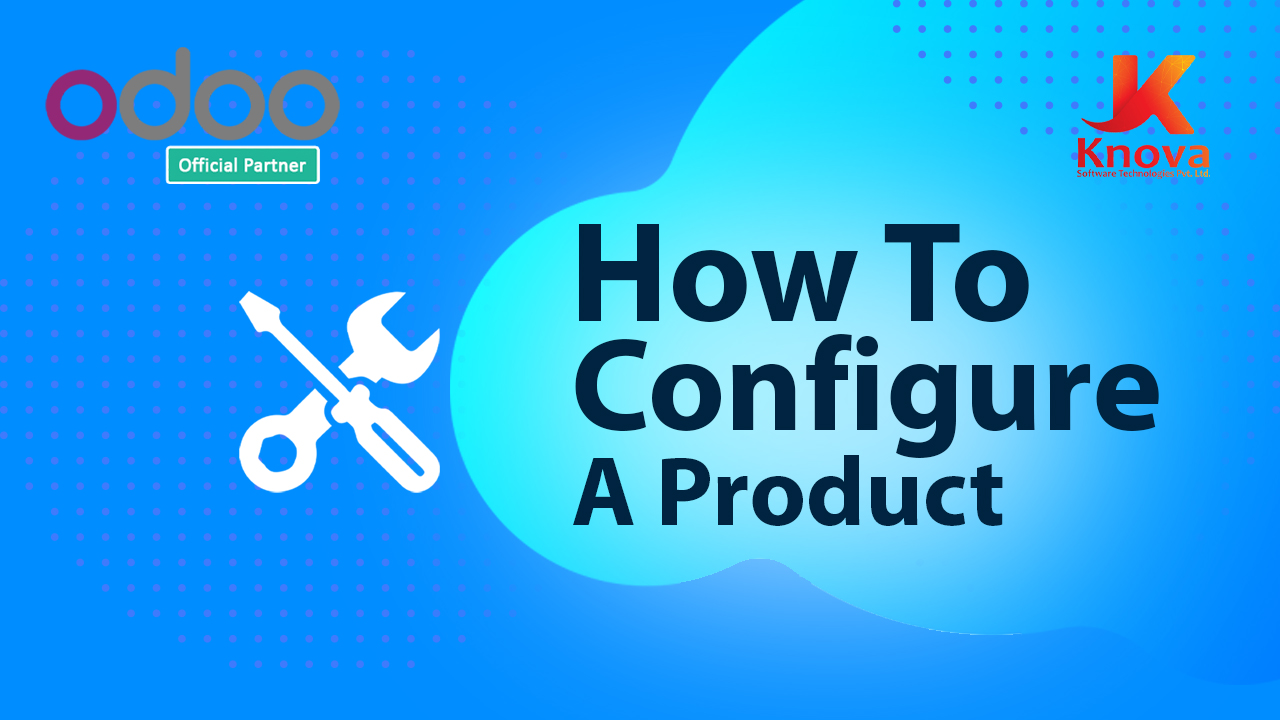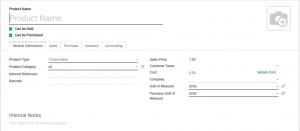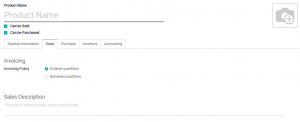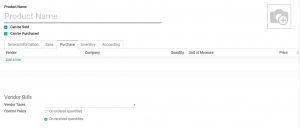
Product Configuration on Odoo
Product is an essential object! Every business runs on product or products. A product can be a service too.
A product is the item offered for sale, purchase or to be used in manufacturing etc. Product can be in physical or in virtual form. Product type determines how the product will be managed in stock management.
Specify your Product Name. Mark it as:
- Can be Sold
- Can be Purchased
By un-marking on Can be sold, the product won’t show up anymore in saleable products. Same is for products un-marked for can be purchased.
Suppose, you are purchasing a pencil for stationary use. Mark un-check on Can be Sold. By un-marking the option product won’t be visible anymore in saleable items.

General information may include the type, category, selling price, cost, internal reference, barcode and any taxes if applied on that product. ODOO also facilitate you with internal notes to maintain any description if needed.
- PRODUCT TYPE
In ODOO, the product types are:
- Storable Product.
- Consumable.
- Service.
To manage your product you must know from which category it may belongs. If the product type is not configured properly, it will problem you in Odoo flow break down.
- Services
Service is a non-material product which you provide and you cannot track its stock quantity. Like you are giving consultation service or marketing service to your client. - Consumable Product
Products which are consumed on hand and you don’t have to maintain stock for it. In office, office table, office files, stapler pins, ruler, coffee maker are treated as consumable products. - Storable Product
Storable product can be maintained easily in stock. You can manage its on hand quantity, minimum quantity, stock locations, traceability and routes.Anything can be a storable product. For example: Spare parts of vehicles, raw material or finished product.
- PRODUCT CATEGORY
You can group your products under different categories. Select your product category by defining its nature. You can define your product as expense, saleable, etc.
By selecting on ALL, the product will be visible for all groups.
- SALES PRICES
Update products selling price on which you are offering it to customer after including its cost, other charges and your profit markup.
- COST
Update the cost you are incurring initially or in making of product. If you are manufacturing a product “Wireless phone charger”, its production cost, cost of transaction and other costs will be calculate in “Cost of the material”
- UOM
Configure your product’s unit of measure. You can also configure different units for sales and purchase.
- INTERNAL NOTES
Odoo gives you the facility of internal notes. Write any information regarding your product there.
INVOICING POLICY
An invoicing of product can be done using two policies:
- Ordered Quantity – The invoices were generated after ordering product quantities.
- Delivered Quantity – The invoices will generate after delivering the ordered product quantities.

VENDOR BILLS
Vendor bills can be generated on ordered quantity and received quantity. Apply any Vendor Taxes. Write any description you want to add in Purchase description.

Watch this video for more details:








Pingback: Purchase Fundamentals Odoo – Knova